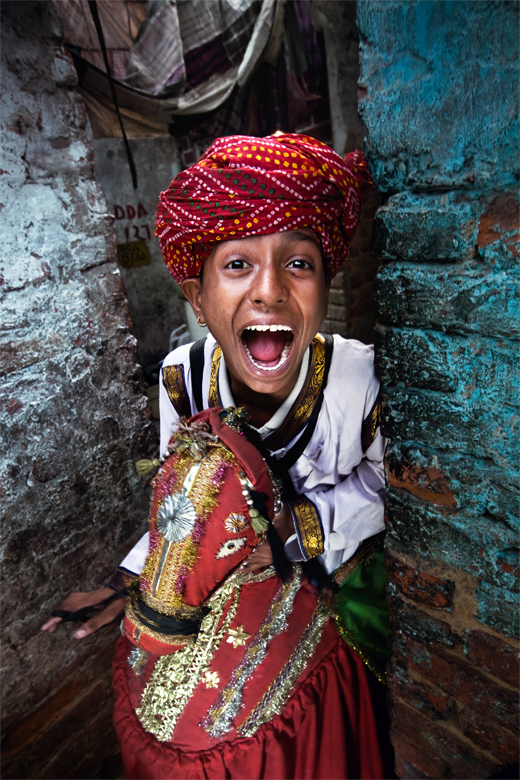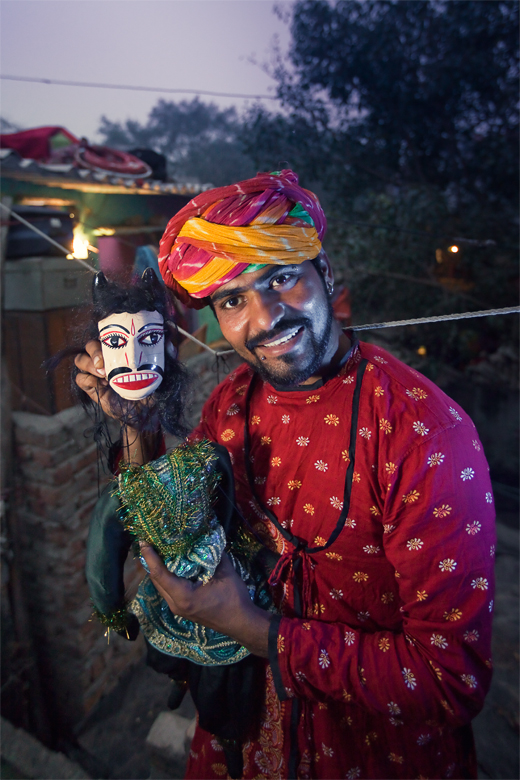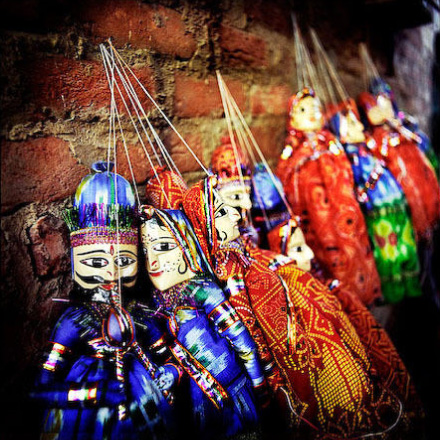By Saket Suman
New Delhi– An oasis of bliss and charm amid the national capital’s fast-paced urban landscape, Kathputli Colony has long been a shantytown with a difference.
Like other slums of its kind, open sewers, rotten garbage and all things filthy comprise a significant part of its character.

The rest is utter magic — it is home to a large number of puppeteers, magicians, acrobats, storytellers, folk singers, snake charmers, dancers and painters, many of whom have performed at Indian festivals at home and abroad on multiple occasions.
The residents of this colony have now been stung by the fear of displacement as the Delhi Development Authority (DDA), which owns the land, has officially begun its drive to shift them to a transit camp in Anand Parbat — without quite taking into account the unique character of this down-at-heel hub of artistes.
It is the first slum being taken up for in-situ redevelopment by a private firm under which residents are being relocated for two years while the shanties are replaced with multi-storey buildings on the same land.
Even as dozens of residents continue to be relocated daily amid heavy deployment of Delhi Police, Sashastra Seema Bal and Central Reserve Police Force, the residents are divided on the issue.
While some view it as a “much-needed positive step” that will ultimately improve their living standards, others are “sceptical about the promises made” and have a number of grievances — the size of the proposed houses being one, and the absence of basic amenities in the transit camp, among others.

Shankar Mahto, a cobbler, said: “I do not mind living in the transit camp for some time because, ultimately, we are going to get a better house to live in. We will be free from the garbage and sanitation problems that result in a number of diseases.”
However, Anil Paswan, a shopkeeper, does not trust the DDA’s motives. “They are not giving us anything in writing. The houses that will be built, if at all, are smaller than the jhuggis that we are living in now. What if this two years turn into five? What if the houses are never built? Who will be responsible for it?” he asked.
Caught between such residents with contrary views are the likes of Bhanu Singh (a magician) and Dinesh (a musician), whose primary concern is that the displacement will kill their art — something that cannot be confined and practised within the four walls of the transit camps; or, for that matter, in the new multi-storey buildings if and when they come up.
The magician Bhanu told IANS that problems like sanitation are issues that everybody wants to be rid of, but despite the poor living standards, people always returned to the colony because of “a deep sense of community”.
“We are artistes. Our days sometimes begin with the sunset when we start our practice, which goes on till late at night. It is here that we collaborate with other artistes, it is here that we can sit under a tree with an audience of local residents and rehearse before our performances. Will we be able to do so when this surrounding is completely changed,” he wondered.

A snake charmer by profession, Bablu is doubtful whether his new neighbours will allow him to keep snakes at home. “I learnt everything here from my father. My neighbours are fine with me keeping snakes at home. They know that it will not harm them, but I am not going to be allowed to do so when things change,” Bablu told IANS.
Several other artistes that IANS spoke to expressed the fear that a change in their natural environment will result in the throttling of artistic careers. Some also expressed fears over the two-year period when they are to live in the transit camps.
“Two years is a long time. We cannot preserve our art for two long years within the four walls of the small rooms that we are expected to live in. When there is an event, people come looking for us in Kathputli, they know our homes. There is no other way they can reach out to many of us,” said Dinesh, the musician from Rajasthan, who has lived in Kathputli Colony for nearly two decades.
Walking down the narrow lanes of this colony was almost customarily marked by exciting encounters: a magician teaching his children, who would learn all his tricks, succeed him and carry forward the family’s ethos; a snake charmer practising with venomous reptiles, some wrapped around his neck like a scarf; or the simple unadorned life of a painter would come alive as he created wonders on the canvas.
These and various other images that one encountered in India’s largest artistes’ ghetto often seemed straight out of some fairy-tale world, dotted with a sense of an artistic civilisation at a time when the world is turning increasingly materialistic.
To be continued… (IANS)















